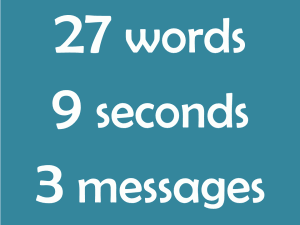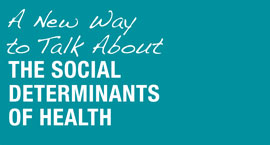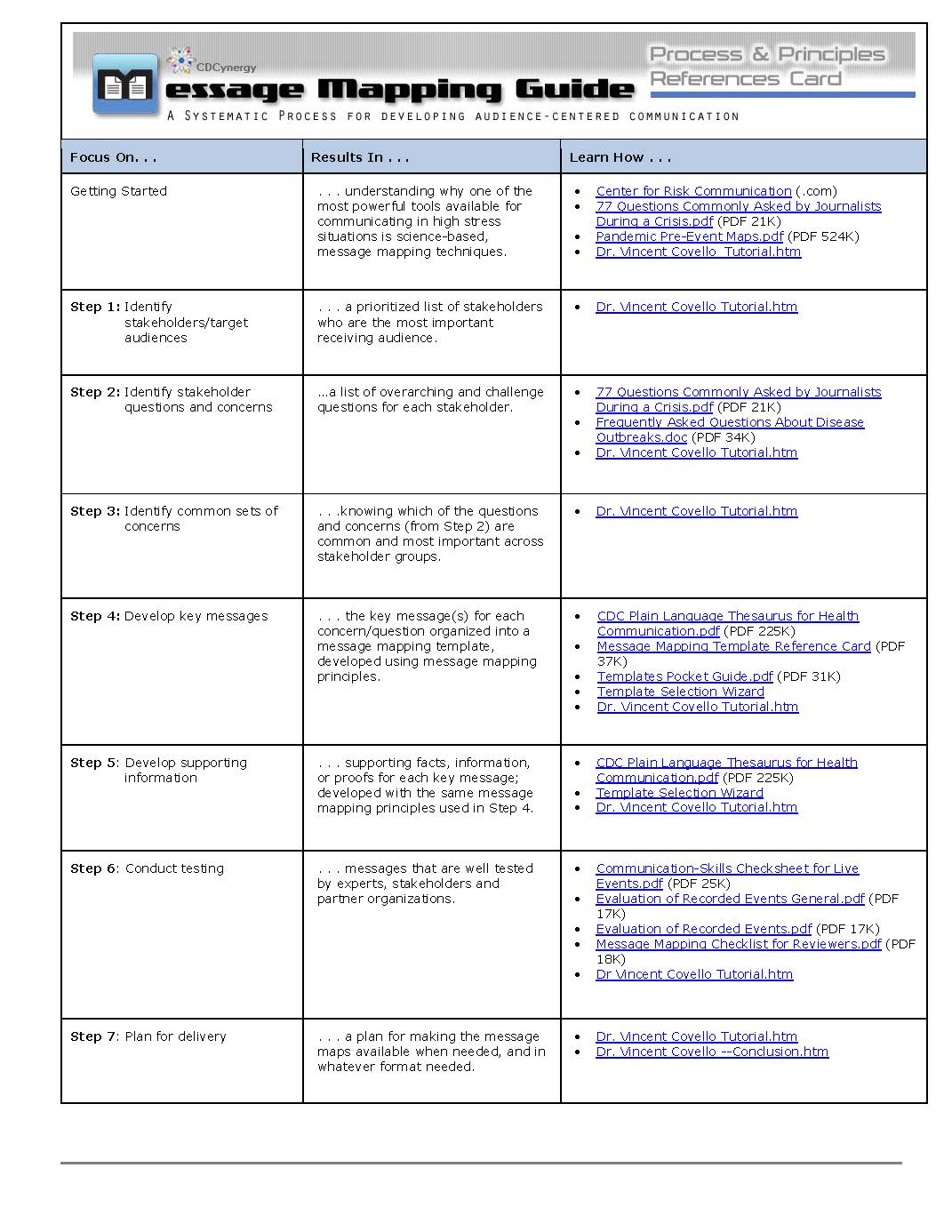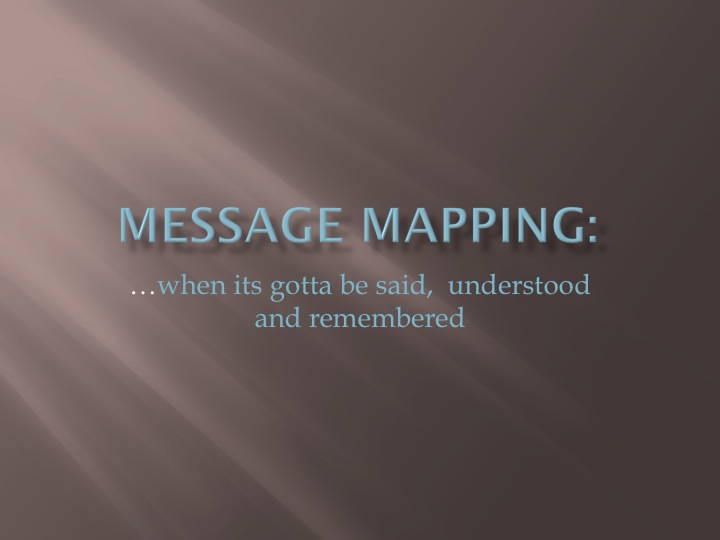
Effective Messaging
27 ~ 9 ~ 3
Messaging and message-mapping are powerful tools to get the right information to the right people at the right time. A good message map is clear, concise and memorable, and can be said in less than 9 seconds. These tools spring from the broad, evidence-based science of risk communication. Anyone can learn to create message maps, and they can serve us in many settings.
Most of us use message maps every day without realizing it. Do you know a topic very well? Do you have to tell someone about it regularly? When we give directions to our house or explain how to open a tricky cabinet in our kitchen, we are using message mapping. The rules of messaging are simple:

These rules have been combined into one rule, the “27-9-3” rule, to make it easier to remember.
Here are some messages we all recognize:
“Good evening, Sir/Ma’am. May I see your license and registration?”
“Two all-beef patties, special sauce, lettuce, cheese, pickles, onions on a sesame seed bun”,
“In an emergency, use the stairs”.
Police, military and emergency preparedness folks are trained to handle emergencies routinely, including risk communication and messaging. Advertisers and journalists “distill” information into jingles and headlines, all day, every day. Children may not know whether Montana is a state or a country, but they can quote their favorite Sesame Street characters verbatim, and sing the “I’d like to buy the world a Coke” song with perfect pitch. Clearly, messaging works! Whether we are directing people to an exit in a burning building, sharing crucial health information with key decision-makers, or solving tough problems with our peers, message-mapping can dramatically increase the effectiveness of our communication.
Even though it takes practice and skill to make messages and map them, most people know a good message when they see one. Read the examples below:
1) Our mission is to provide an opportunity for all New Mexicans to obtain an excellent education in the health sciences. We will advance health sciences in the most important areas of human health with a focus on the priority health needs of our communities. As a majority-minority state, our mission will ensure that all populations in New Mexico have access to the highest quality health care.
2) We will make more progress in health than any other state by 2020.
Without looking back at the text above, consider these questions:
• Can you remember either of these messages well enough to summarize it?
• Are you engaged or inspired by the text?
• If you had to “sign up” to work towards one of these goals, which one would you choose?
While the folks that created both of these messages were very invested in sharing their message, and took great pains to choose just the right words to capture the most important information, one message engages us more, and stays in our minds after we read it.
Comparing two nine-word messages highlights other qualities of a good message:
1.When you finish the test, put your pencil down.
2.Please signal completion by aligning writing instruments with document.
We may smile at this example, but we’ve all struggled through dense, poorly written documents, full of “$10” words strung in endless sentences—we can’t wait to stop reading, and we recall almost nothing.
Because it takes time to craft clear, concise and memorable messages, the best message maps are created ahead of time—not in the middle of a crisis. Message maps developed after the first attack on the World Trade Center in 1993 were the basis for public information and guidance delivered by New York City officials after the events of 9-11.
You can practice message-mapping any time—when learning new material that is important to remember, when a speaker or document is not engaging or memorable, or when we must summarize important data or news. If you are creating a message map to structure a full presentation or to outline sustained work, you can “flesh out” the message map with 1-3 supporting points under each message, and cite the source for facts shared in the supporting points. In tense or high-stakes situations, like meeting with a reporter on a controversial issue or working to align very polarized or contentious groups, you can also develop a list of questions you may be asked, and “map” answers, using message-map format.
Health is Political




